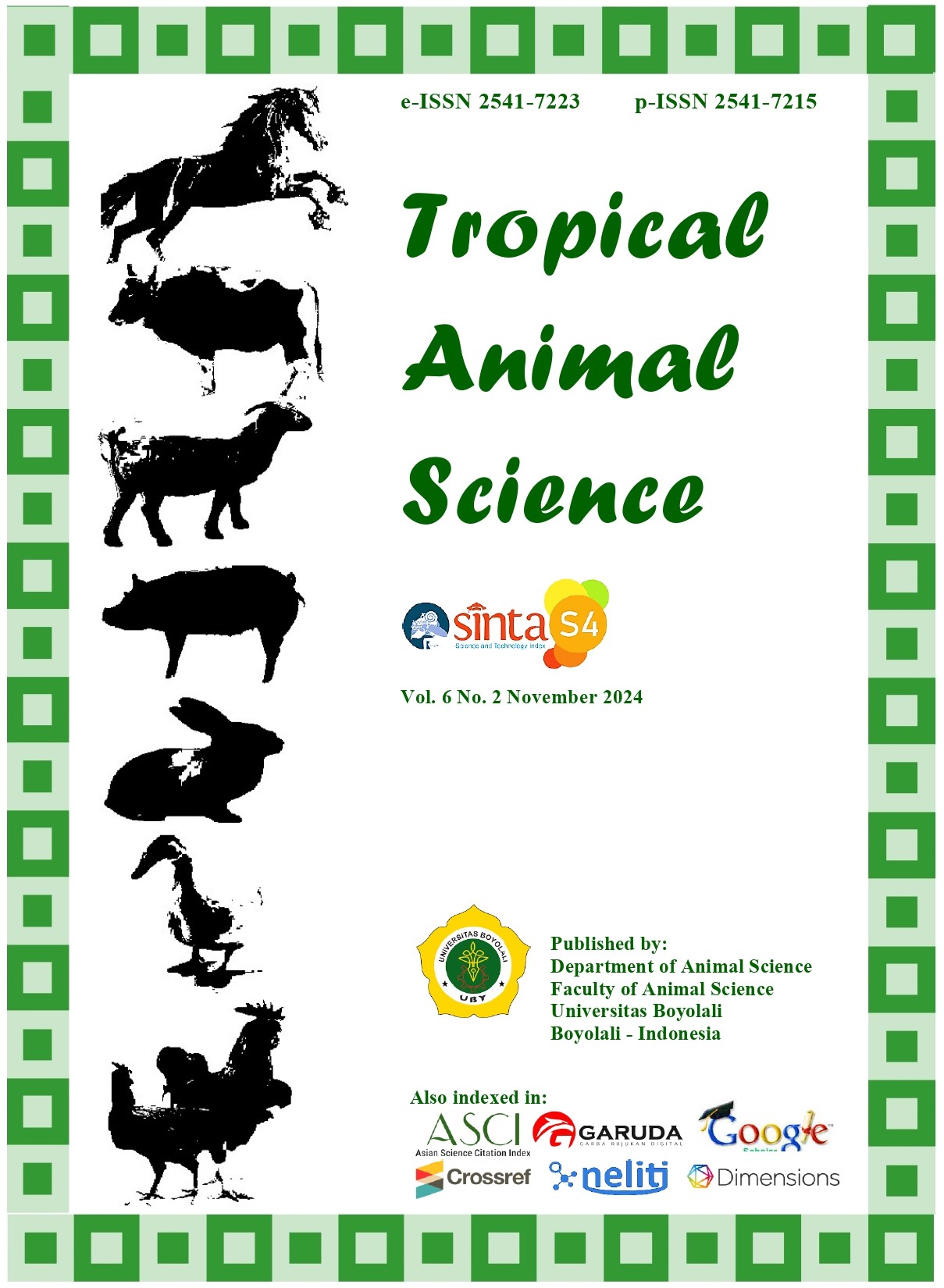KUALITAS KIMIA YOGURT DENGAN PENAMBAHAN SARI BUAH CARICA (Vasconcellea pubescens)
DOI:
https://doi.org/10.36596/tas.v6i2.1806Keywords:
carica, chemical quality, yoghurtAbstract
One of the livestock products that are widely consumed by the public is milk. Processed milk products are preferred by the public compared to fresh milk, one of the causes is the case of lactose intolerance. This research aims to determine the chemical quality of dairy products, namely yoghurt added with carica juice with different concentrations of addition. The method used in this research is an experiment starting from the preparation stage, sample making, laboratory tests, and data analysis. The treatment used was different concentrations of juice addition of 0%, 10%, 20%, 30%, and 40%. The results showed that the addition of carica juice had a significant effect (P<0.05) on the content of lactose, protein, fat, solid non fat, and density but had no significant effect (P>0.05) on pH and total solid. The findings of this research were that lactose, protein, solid non fat, and density increased with the addition of carica juice concentration in yoghurt. It is inversely proportional to the fat content which decreases with the addition of carica juice concentration. The conclusion of this research is the addition of carica juice of 40% to yoghurt as the optimal addition of other treatments that have high protein content and low fat content.







